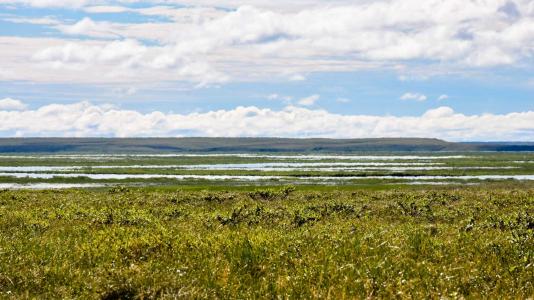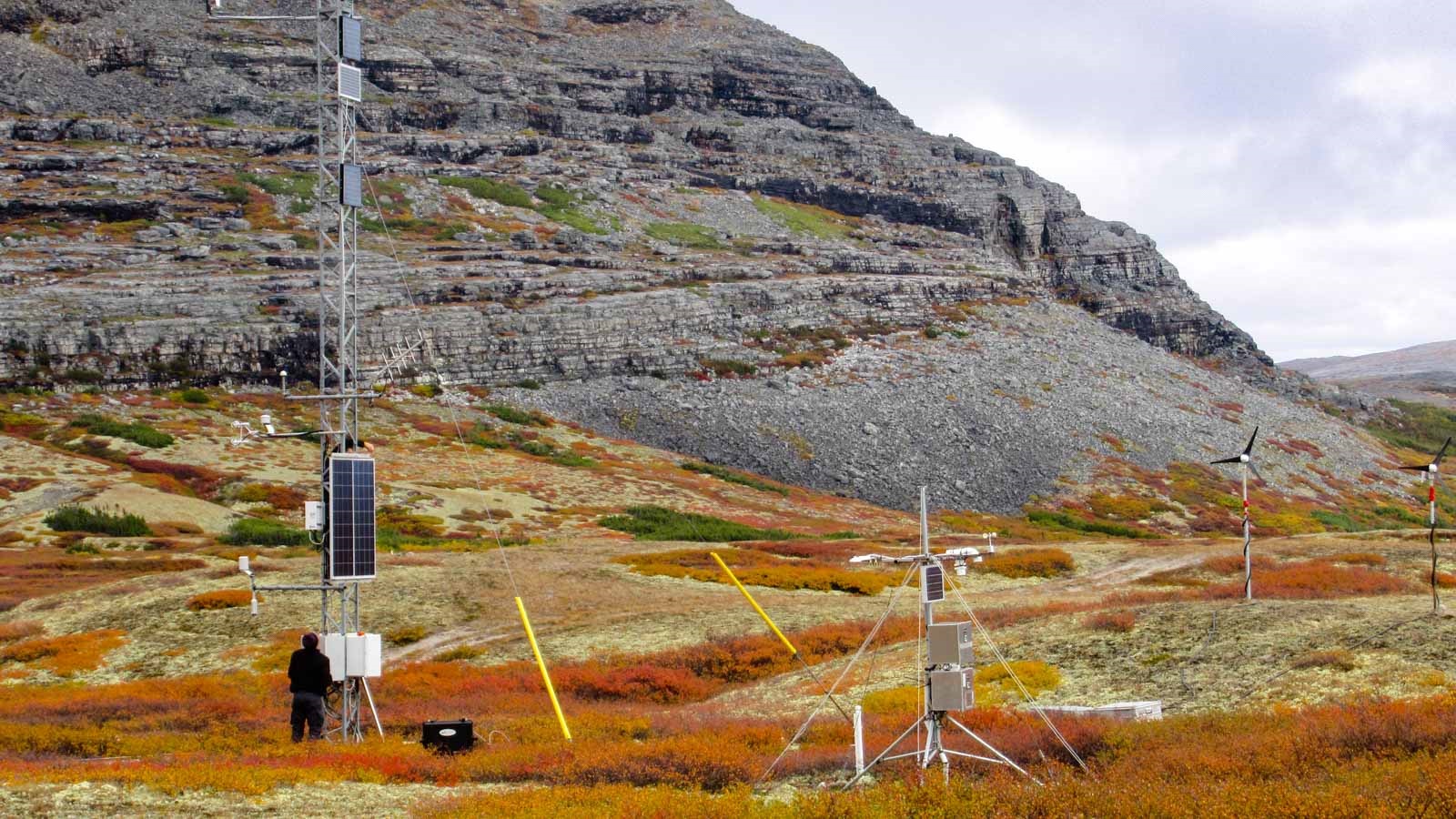Vegetation has a substantial impact on the movement of energy in the Arctic

Since 1979, the Arctic has warmed nearly four times faster than the Earth as a whole due to climate change. Rising temperatures have reduced the extent of sea ice and permafrost, decreased snow cover, and altered plant communities in the Arctic. These changes can impact how energy moves between the land and the atmosphere in the region, which subsequently affects weather and temperature patterns around the world.
A recent study from researchers across 63 institutions, including the U.S. Department of Energy’s (DOE) Argonne National Laboratory and the DOE Office of Science Atmospheric Radiation Measurement (ARM) user facility, evaluated the impacts of various drivers on energy exchange, or the process by which energy moves between land and the atmosphere in the Arctic. They found that vegetation type, which is often simplified in climate models, is a primary predictor of how energy is exchanged during the Arctic summer.
“I expected there to be differences in vegetation type, but not to this extent,” said Ryan Sullivan, assistant atmospheric scientist at Argonne and co-author of the study. “Vegetation type had stronger predictive skill on the surface energy budget than permafrost, temperature, snow cover and cloud cover.”
“We hope that people improve treatment of vegetation type in Earth system models and use this to also better understand how these effects might change in the future.” — Ryan Sullivan, assistant atmospheric scientist at Argonne
The surface energy budget describes how much energy from the sun reaches the Earth’s surface and how much energy is absorbed or reflected back to the atmosphere. The budget includes four main components: net radiation, sensible heat flux, latent heat flux and ground heat flux. Net radiation captures the amount of energy going into Earth’s system. Sensible heat flux describes energy that is transferred as heat, causing a change in temperature. Latent heat flux refers to a change in energy that doesn’t result in a change in temperature. Finally, ground heat flux defines energy that is stored in the ground.
In this study, the researchers evaluated the effects of 15 drivers on the four main components of the surface energy budget in the Arctic from June to August. They analyzed data collected between 1994 and 2021 across 64 measuring stations.
Because snow and ice reflect heat from the sun back into the atmosphere, the researchers expected to that snow amount, snow duration and permafrost extent would be strong indicators of the four components of the surface energy budget. However, they found that the type of vegetation community was a better predictor of sensible heat flux and latent heat flux than any of the other drivers tested. “Remarkably, in summer the difference in heat flux between two types of vegetation — such as a landscape dominated by lichens and mosses and one with shrubs — is about the same as between the surface of glaciers and green grasslands,” said Jacqueline Oehri, first author of the study.
The scientists suggested that vegetation type has a strong impact on the energy budget for two primary reasons. First, the Arctic exhibits extensive diversity in plant communities, ranging from boreal peat bogs to lichen-covered barrens to grasslands. Each vegetation community reflects a variety of other environmental conditions, such as temperature, topography, soil moisture and permafrost conditions. Second, plants differ in height, productivity and albedo traits, all of which can impact how energy moves between the land and the atmosphere.
The study also showed that effects of vegetation type on the energy budget varied depending on when snow cover disappeared in the spring and returned in the fall, demonstrating the importance of seasonality in energy fluxes.
“We hope that people improve treatment of vegetation type in Earth system models and use this to also better understand how these effects might change in the future,” said Sullivan. For example, warming global temperatures may change the distribution of certain plant species in the Arctic, which could further impact how energy exchange occurs.
“Another novel outcome of this study was the synthesis of all the international measurements,” said Sullivan. “It was a great opportunity to bring different groups together and work across disciplines.”
The paper based on the research, “Vegetation type is an important predictor of the Arctic summer land surface energy budget,” was published last October in Nature Communications.
The research was supported in part by the DOE Office of Science.
Argonne National Laboratory seeks solutions to pressing national problems in science and technology by conducting leading-edge basic and applied research in virtually every scientific discipline. Argonne is managed by UChicago Argonne, LLC for the U.S. Department of Energy’s Office of Science.
The U.S. Department of Energy’s Office of Science is the single largest supporter of basic research in the physical sciences in the United States and is working to address some of the most pressing challenges of our time. For more information, visit https://energy.gov/science.
